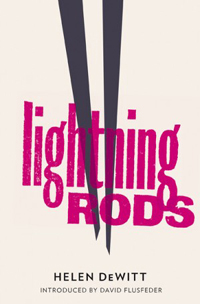The advent of the eReader did not, after all, signify the end of the book. Sales of physical books are up and, to meet the demand, publishers are increasingly issuing beautifully designed and illustrated editions you’ll love to look at as much as you love to read. And, these beautiful books are perfect gifts. Here are ten that are on my Christmas list…

As Kingfishers Catch Fire: Birds & Books
by Alex Preston, illustrated by Neil Gower
For the birdwatcher in your life, As Kingfishers Catch Fire is a gorgeously illustrated meditation on the endless grace and variety of birds. Tom Holland calls it, ‘A magical book: an inimitable fusion of ornithology, literary anthology and autobiography.’

Making Winter: A Creative Guide for Surviving the Winter Months
by Emma Mitchell
I was fortunate enough to attend one of Emma’s Silver Clay workshops in Cambridgeshire last year and so can confidently testify that she embodies the Danish philosophy of Hygge. Her Instagram feed is a delight to the eyes. Making Winter is a book full of her wonderful images and inspiring ideas for nature-orientated crafts.

Alias Grace
by Margaret Atwood
For the box set binge-watcher, if you were captivated by The Handmaid’s Tale, another of Margaret Atwood’s novels has been adapted for TV and is now available on Netflix. Alias Grace is based on a true story, explored and unravelled with all of Margaret Atwood’s trademark subtlety and ambiguity. But, of course, you should read the book first, and it’s available in this stunning hardback edition.

Baking with Kafka
by Tom Gauld
Tom Gauld is a regular cartoonist for The New Yorker, The New York Times, New Scientist and The Guardian, amongst others, and I love his signature wry, fatalistic humour. In Baking with Kafka, he explores important questions like: How do you get published during a skeleton apocalypse? What was the secret of Kafka’s lemon drizzle cake? And, What plot possibilities does the exploding e-cigarette offer modern mystery writers?

The Lost Words
by Robert Macfarlane, illustrated by Jackie Morris
We’ve heard that terms relating to the natural world are disappearing from the dictionary as they fall out of use: words like dandelion, otter, bramble and acorn. The Lost Words is a collection of acrostic spell-poems, exquisitely illustrated by Jackie Morris, created with the intention of reclaiming these words and ‘re-wilding the language of children’. (It’s also a gigantic book – two feet high!)

A Gentleman in Moscow
by Amor Towles
On 21 June 1922 Count Alexander Rostov is sentenced to house arrest in the Hotel Metropol, his life is only spared because he once wrote a socialist-sympathising poem. Over the next forty years the Count makes a life within the confines of the hotel against the backdrop of a politically tumultuous period in Russian history. The first half is quite anecdotal, but if you persevere the main impetus of the narrative becomes clear in the second half and the final chapters are sublime. A Gentleman in Moscow is available in this stunning black and gold hardback edition.

The Bear and the Nightingale (The Winternight Trilogy #1)
by Katherine Arden
For lovers of fantasy, Vasya lives in a small village in the woods in northern Russia. She has grown up hearing stories of the ‘Winter King’, a Russian equivalent of Jack Frost: ‘Frost-demons have no interest in mortal girls wed to mortal men. In the stories, they only come for the wild maiden.’ In addition to her wild wandering in the woods, Vasya has special gifts – she alone can see the household spirits that protect their home and she can talk to horses. When a young, fervent Christian priest arrives in their village and turns people against the old gods and superstitions, he upsets the balance of nature and unwittingly prepares the way for one much more dangerous than the Winter King. Vasya must remain free of societal constraints to protect her family and her village from this threat. This story reads like a beautifully woven Russian folk tale – thrillingly atmospheric, lyrical and otherworldly.

The Language of Thorns: Midnight Tales and Dangerous Magic
by Leigh Bardugo, illustrated by Sara Kipin
For your teenager, whether they are familiar with the world of Leigh Bardugo’s ‘Grishaverse’ or not, they will enjoy the lavish illustrations and beguiling tales of ‘dark bargains struck by moonlight, of haunted towns and hungry woods, of talking beasts and gingerbread golems, where a young mermaid’s voice can summon deadly storms and where a river might do a love-struck boy’s bidding but only for a terrible price.’

A Skinful of Shadows
by Frances Hardinge
My go-to book for children’s birthday presents last year was Frances Hardinge’s superb novel, The Lie Tree. Her new book is out and available in a striking hardback edition. A Skinful of Shadows is the story of twelve-year-old Makepeace, a ‘bear-hearted girl’ who becomes possessed by a spirit which gives her strength when she is sent away to live with rich and powerful relatives and faces the possibility of civil war. But it’s not just for the kids, Hardinge is a mesmerising storyteller and I’ll definitely be reading this one too.

Good Night Stories for Rebel Girls
by Elena Favilli, Francesca Cavallo
A great empowering feminist read for your daughter, Good Night Stories for Rebel Girls is the result of a viral crowdfunding campaign to highlight strong female role models in books. It is vibrantly illustrated by sixty female artists from all over the world, and introduces us to one hundred remarkable women and their inspirational lives, including Ada Lovelace, Malala, Amelia Earhart and Michelle Obama.















































